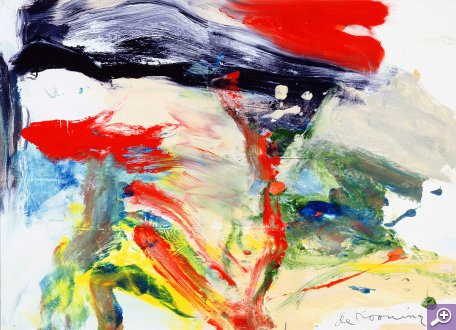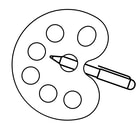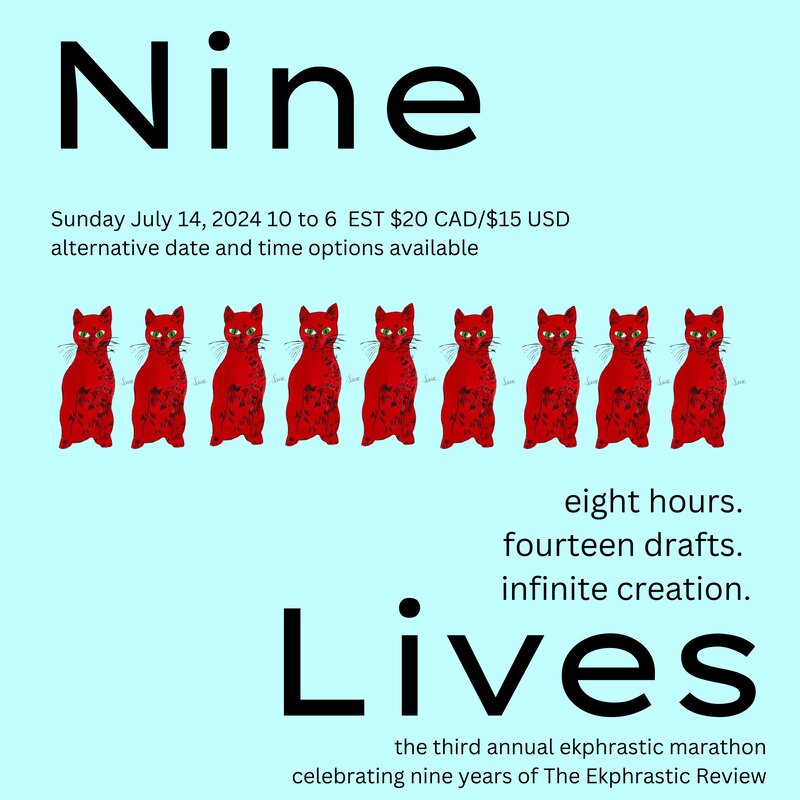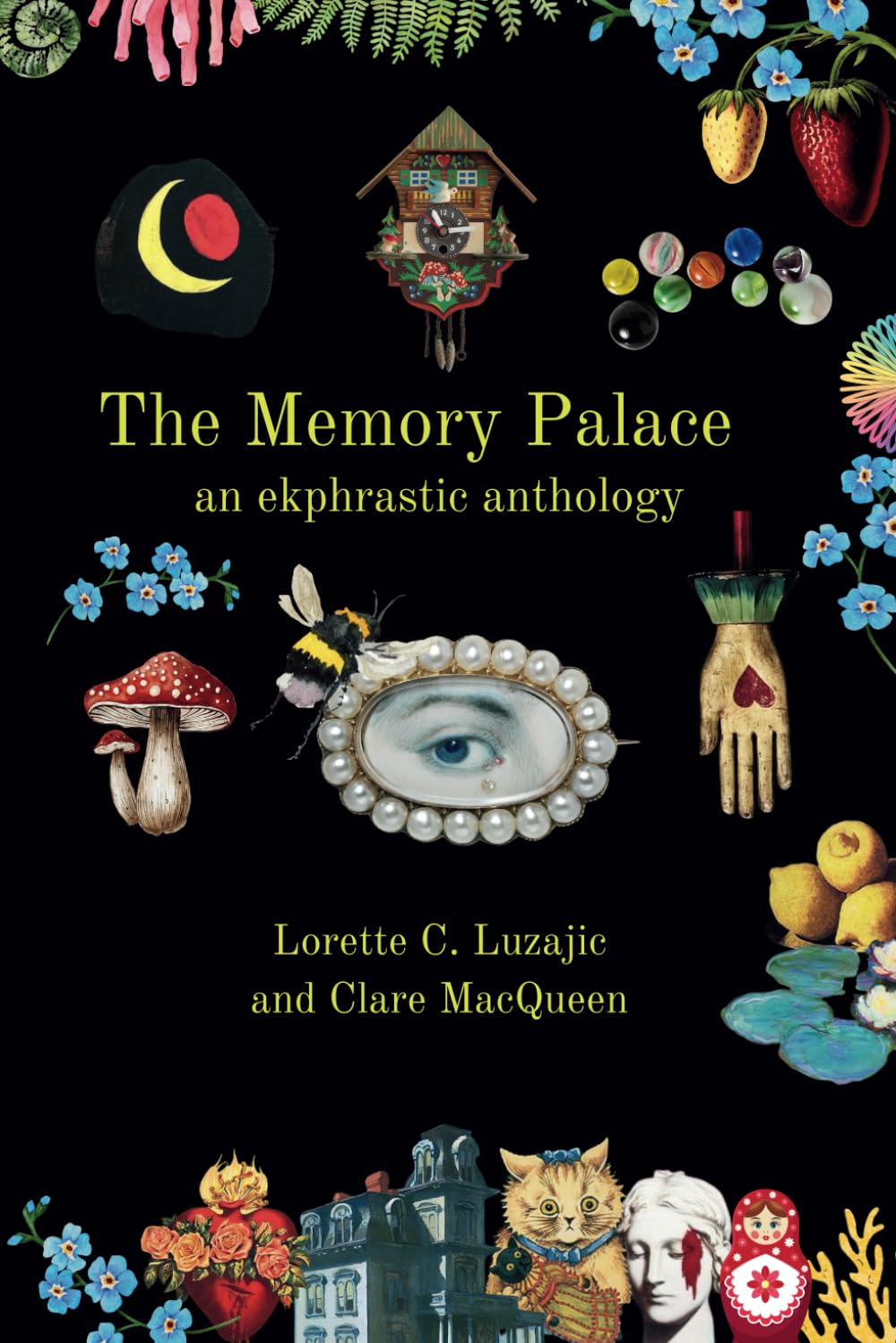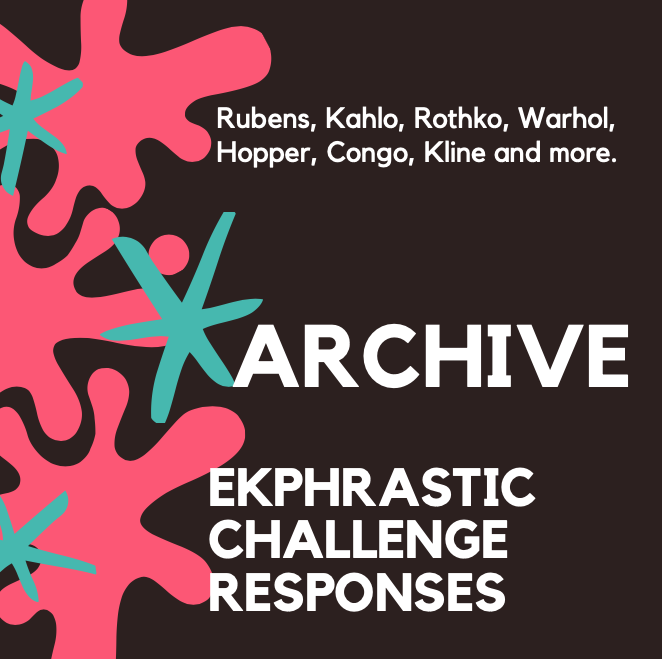|
A Responding Mode A sign indicates it's Bill meeting Willem's mind and skills, and I'm rapt, beginning to absorb. Then someone snaps, "Careful! Don't touch it!" Breaking the silence, turning me. A guard stands 15 feet away. His dark suit supports a badge and a name plate, S. Something, our distance apart affecting what I can read. He's probably retired, maybe an ex-teacher. A colleague of mine is doing this job. He shakes his head. His face is blank, etched with wrinkles, shaven. His hair is raked into terraces, the part between them as straight as a die, as some old timers say, the hair matted down as if gel holds it in place: two farm fields that a stone wall separates. My responding-to-art mode persists. I don't want to lose it. Stance: His black shoes are shined, and his spectacles gleam in the lights. His arms hang down so that his hands rest in front, the back of one inside the palm of the other, making a vee, suggesting "I'm relaxed." Clad according to the museum's code, he looks alert, assured, maybe bored (I would be in his place). His pose reflects poise, confidence without friendliness, but hints of a threat (the laws of the land cloak him with power). I smile and nod, following the protocols and habits I've learned in 60 years. The walls still echo his words, or my mind does, plus the two clicks my shoes made stepping close to the artwork. I remember extending my right hand so its fingertips nearly touched the wall by the work. Considering the guard's angle of vision and the position of my body, I don't think he would have been able to see the space between my fingers, the edge nor inside of the hung object. Maybe that perspective explains his intrusion. More to consider: my knowledge of this place. We're in a restored, early 20th century, three-story, rambling, stony structure on a hillside overlooking a river named after a North American Indian tribe. A multimillionaire donated the land and the building over a century ago, 50 some years after predecessors had driven the last indigenous tribes from Ohio, annihilating a large portion of them. His money was derived in part from manufacturing locomotive passenger cars. Why think any of this? Something inside brings it up. Like the donor's preserved heart, a furnace or some kind of blower attached to it is blasting away, purring really, off in the background. Producing sterility? There's no smell. What I breathe is presumably vacuumed, cleansed of spoors, fungi, and other particles, most not perceivable with human eyesight. The circulation of purified air helps eliminate their normal massing into motes that would accumulate as dust. The flowing air also maintains temperature and humidity at levels an expert must have deemed beneficial to art. I turn back to the protected object itself, a mid-20th century creation. It deliberately, obviously, breaks the traditions of using a frame and imitating physical shapes and movements, but retains the conventionally squared-off corners and rectangular shape, plus ending the paint at the edges. The swirls of flat paint imply scattered and random applications. There seem to be no splashes with spikes of paint radiating off central cores, as if thrown or dropped from a container. My impression: the colours were applied with brushes, therefore with more control than perhaps initially thought. A few heavy, solid patches of red, creamy white, and black occur asymmetrically. For these I imagine the paint-dappled hand of the artist pressing down bristles laden with paint back near the ferrule and dragging the thick liquid a few inches. Some of these colours overlap yellow, green, blue, and a brighter, purer white, all of which seem to have been applied with bristle ends, some leaving discernible stroke marks. I'm guessing a 2- or 3-inch flat brush. Do I perceive a pattern? The lighter colours support and emphasize the darker colours, and most of them extend horizontally from my right to my left and lower to higher in the picture. A wide black belt runs from above the middle toward the upper left where it drops along the painting's upper edge. The brighter white might be the bare canvas. It occurs between colours, seems to underlie everything, and dominates the upper part of the black belt making it gray because the black there is thin. There's also a movement, which I can feel. My eyes follow the diffusion from lower right to upper left. But why not the reverse, left to right, top to bottom? I wonder: would the artist approve of hanging the painting lengthwise or upside down from this presentation? Probably not. The movement of the eyes upward seems an ecstatic expression. "Untitled," the printed sign says. I like that as a title. It tells me to figure out the painting myself. It leaves significance up to me. Its meaning too. Meaning and significance aren't the same thing, but they do overlap. No canvas though. The sign also says, "Oil on paper on board." The softened black is soothing as it gives way to brightness, moving from depression to enlightenment. Perhaps this painting broke new ground flaunting old rules. I don't know about that. But it is colourful and decorative. It would glow in the sombre decor of my bedroom. The artist and I are collaborators, but I have no idea what he had in mind. The painting fills the space it takes up without crowding. Its colourful arrangements please me. Maybe in half an hour the painting will not affect me this way. Moods change, and like the weather, inversions can result. The artist, though, is long gone, and even if I do discover that he has explained the painting, wouldn't he look at his creation proprietarily? Wouldn't he be viewing the artwork at a distance as I am? Plus, I believe, we are all mysteries unto ourselves, and so is the ultimate meaning of art. Bill Vernon Bill Vernon studied English literature, then taught it. Writing is his therapy, along with exercising outdoors and doing international folk dances. Five Star Mysteries published his novel OLD TOWN, and his poems, stories and nonfiction have appeared in many magazines and anthologies, including The Ekphrastic Review.
0 Comments
Your comment will be posted after it is approved.
Leave a Reply. |
The Ekphrastic Review
COOKIES/PRIVACY
This site uses cookies to deliver your best navigation experience this time and next. Continuing here means you consent to cookies. Thank you. Join us on Facebook:
July 2024
|
